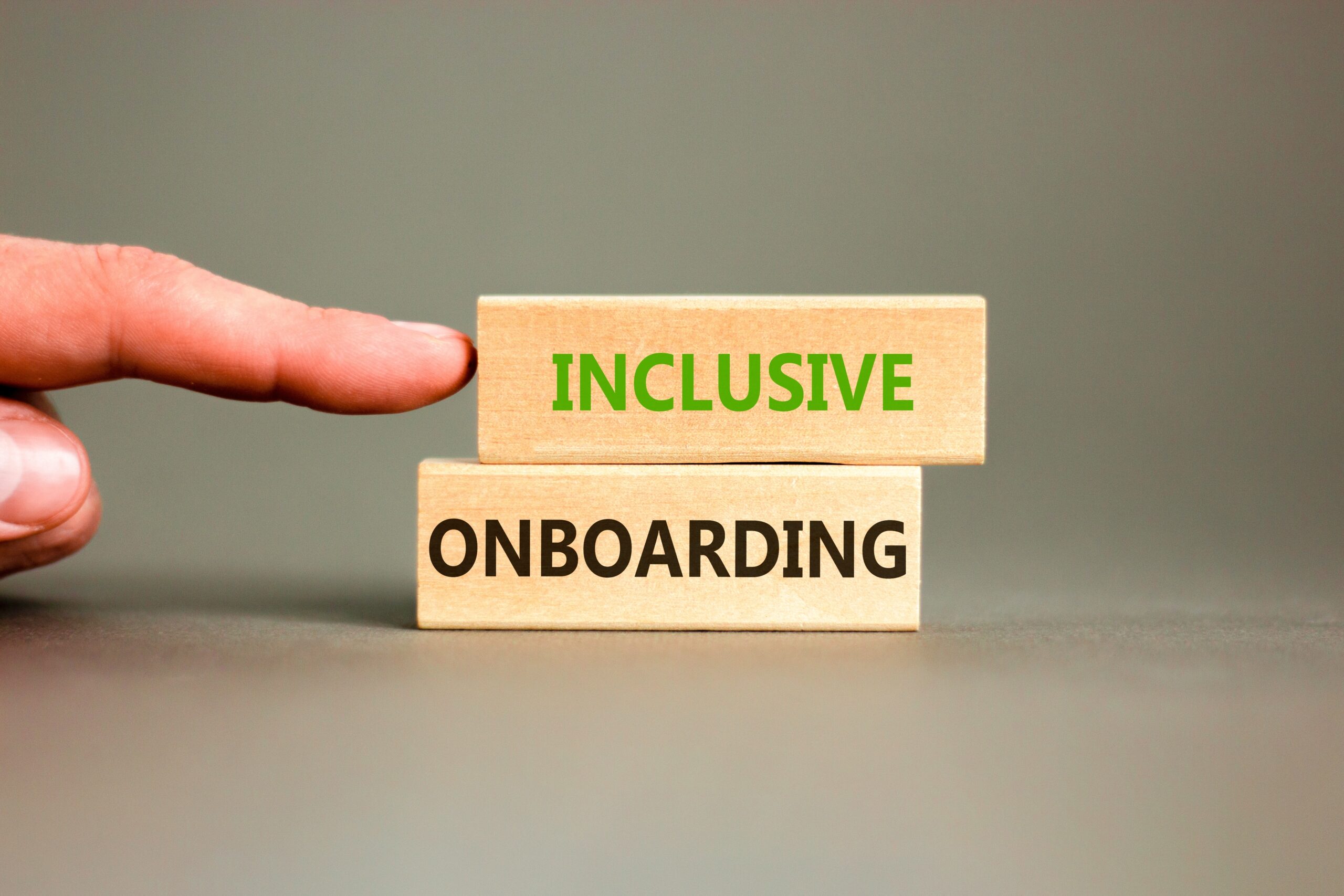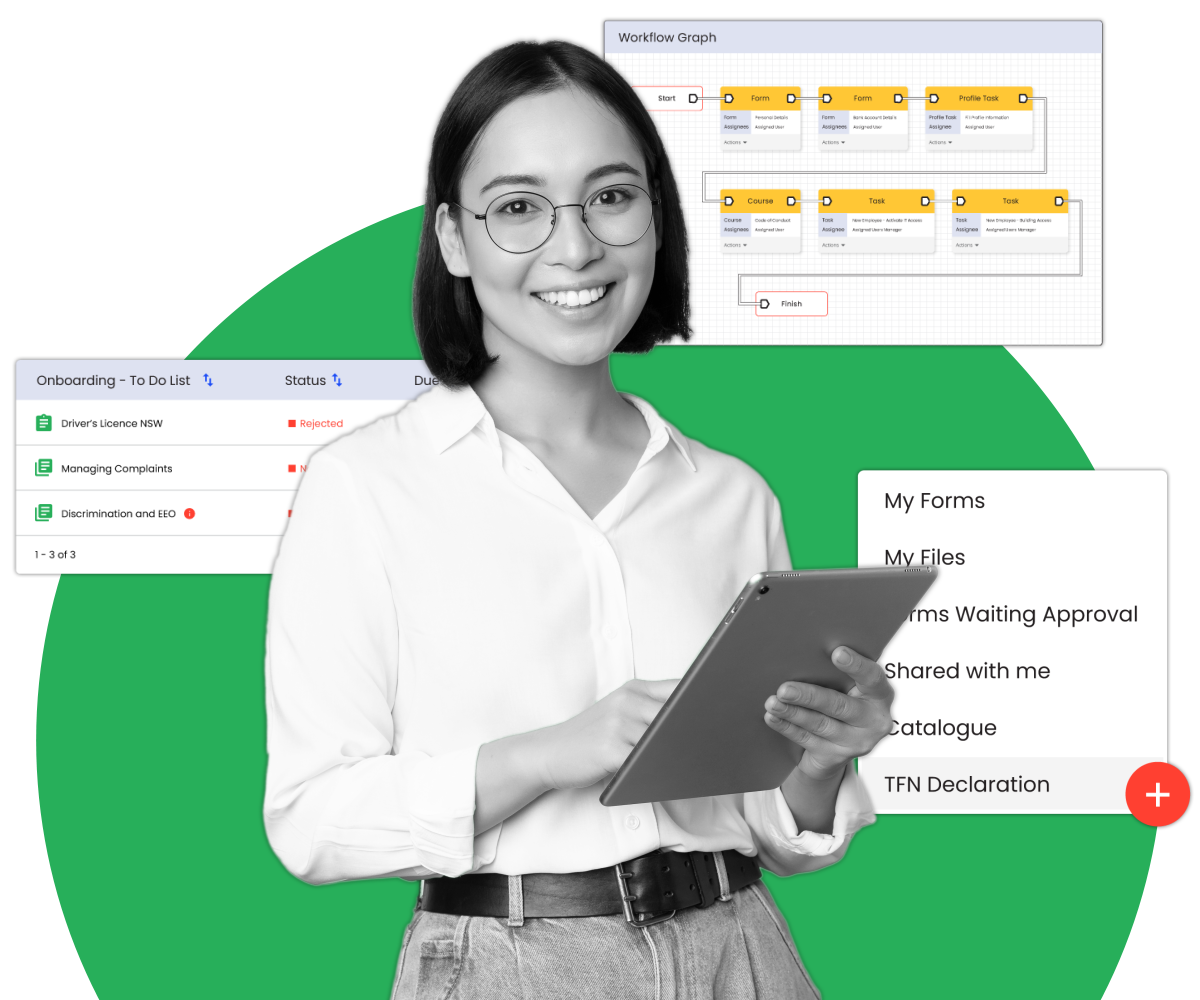Inclusive Onboarding: Setting New Hires Up for Success
The onboarding process is a critical time for new hires that sets the tone for their entire tenure at a company. How new employees are welcomed and trained at the start has a big impact on their success, engagement, and retention.

Companies that want to build genuinely inclusive workplaces must make inclusion a focus from day one. An onboarding process designed with diversity, equity, and belonging in mind will lead to higher job satisfaction, performance, innovation, and retention. This article will provide an in-depth look at how HR leaders and hiring managers can create an onboarding experience that sets new hires up for success.
What is inclusive onboarding?
Before diving into how to create an inclusive onboarding experience, let’s look at what inclusive onboarding means.
Inclusive onboarding aims to welcome and set up every new hire for success, regardless of their background, identity or abilities. It’s about making new hires feel welcome, communicating your values, and helping them connect with others from the start.
Studies show that inclusive onboarding leads to greater new hire satisfaction, retention and performance.
Some key elements of an effective inclusive onboarding process include:
- Providing information in multiple formats like written, verbal and visual to accommodate different learning styles.
- Allowing sufficient time for new hires to digest information rather than overwhelming them.
- Ensuring workplace convenience for new hires with disabilities.
- Using inclusive language, images and examples in onboarding materials.
- Assigning mentors and peer buddies to support new hires, particularly those from less presented groups.
- Surveying new hires and always improving the onboarding process based on feedback.
When done right, inclusive onboarding sets the tone for an engaging employee journey and inclusive culture.
Why inclusive onboarding matters
Onboarding done right goes beyond paperwork and processes. It’s about creating connections, communicating your values, and making people feel they belong from day one.
An inclusive experience:
- Sets the tone for the employee journey and overall culture
- Kickstarts diversity, equity and inclusion efforts
- Boosts employee retention by making people feel welcomed and engaged
- Surfaces feedback to constantly improve
When new hires feel excluded, they become disengaged. But when you cultivate belonging from the start, it impacts everything from innovation to collaboration to retention.

Strategies to build an inclusive onboarding program
Before day 1
The onboarding process begins before a new hire’s first official day. It’s important to make a good first impression by welcoming new team members and giving them the information they need.
Welcome new hires
- Send a personalised email or video introducing yourself and expressing excitement for them to start. Overview logistics like paperwork, required materials, schedules, and dress code.
- Mail a welcome package with company swag, employee handbook, and any pre-boarding paperwork.
- Digitally introduce the new hire to team members and key cross-functional partners via email or chat.
Share company culture and values
- Build trust and explain the company’s commitments and initiatives related to diversity, equity, inclusion and belonging.
- Provide access to your diversity reports and goals. Highlight the positive impacts of inclusion as a cultural value.
- Share calendars for upcoming cultural events, speaker series, ERG meetings and more.
Day 1 and week 1
The first day and week are crucial for immersing new hires into the company culture and team dynamics. Having an intentional focus on inclusion will make them feel welcomed and set the stage for open communication.
Create an inclusive orientation program focused on diversity, equity and inclusion.
Inclusive orientation sessions
- Devote dedicated time to explaining diversity, equity, inclusion and belonging initiatives.
- Have ERG leaders share their mission and how to join.
- Discuss reporting procedures for any experienced biases.
Provide inclusive onboarding materials
- Include preferred gender pronouns in employee profiles and onboarding paperwork.
- Make sure handbooks and presentations use inclusive language and visuals.
- Provide materials in accessible formats like large print, braille, captions etc.
Schedule 1:1 meetings
- Have new hires meet with their manager 1:1 to discuss role expectations, goals, and open questions.
- Set up 1:1 time with an assigned mentor outside their team to provide additional support.
First 90 days
The first 90 days represent a crucial ramp-up period. Maintaining an inclusion focus during training and skill building will ensure onboarding sticks.

Outline inclusive training programs, resources and progress check-ins.
Inclusive training programs
- Offer access to diversity and inclusion e-learning resources and training courses.
- Include perspectives from diverse team members and leaders in the general onboarding curriculum.
- Provide opportunities to join team meetings and projects to learn collaboratively.
Check-in at 30/60/90 days
- Survey new hires on inclusion experience and areas for improvement.
- Hold 30/60/90-day meetings with managers to discuss progress and goals.
- Connect new hires with mentors for additional 30/60/90-day check-ins.
Celebrate small wins
- Recognise and celebrate early accomplishments like completing training programs.
- Have managers highlight successes so far amongst a wider team.
Ongoing inclusion
Onboarding has no defined end date. Maintaining an inclusive environment requires ongoing training, growth and open communication.
Foster open communication and psychological safety.
- Encourage new hires to speak up if they ever feel excluded or need additional support.
- Promote sincerity over conformity by welcoming diverse perspectives.
- Foster psychological safety through team-building activities focused on trust.
Ongoing training and growth
- Provide access to continued DEI e-learning resources and speakers.
- Offer skills training, mentorship and leadership programs to nurture growth.
- Create individual development plans tailored to new hire’s goals.
Connect with employee resource groups (ERGs)
- Have ERG leaders consistently engage new hires after orientation.
- Support new hires in joining ERGs or starting a new one if they wish.
- Share calendars for upcoming ERG events, meetings and initiatives.
Tools to use for onboarding
Leveraging the right tools can streamline onboarding and create a great experience:
- Collaboration platforms like Slack or Microsoft Teams facilitate communication and connection.
- HRIS or ATS systems centralise paperwork, provide resources, and track progress.
- Surveys collect feedback from new hires throughout onboarding.
- eLearning modules deliver training and information on-demand.
- Onboarding checklists outline required steps and guide managers throughout the hiring process.

Conclusion
Onboarding done right goes beyond paperwork and logistics. It’s an invaluable opportunity to embed your company’s commitment to diversity, equity, inclusion and belonging from day one.
By focusing on inclusion throughout the pre-boarding, orientation, and ramp-up periods, you can ensure each new hire feels welcomed, valued and set up for long-term success. This will lead to higher engagement, performance, innovation, and employee retention.
Assess your current onboarding experience and identify areas where small tweaks could make a big difference. Something as simple as inclusive language in documents or diverse perspectives in training content demonstrates that inclusion matters at your company.
Maintain an inclusive environment by keeping the doors of communication open and providing ongoing training and growth opportunities. When new hires feel welcome and included from the start, it makes the workplace better for everyone.
 HR Core
HR Core 









